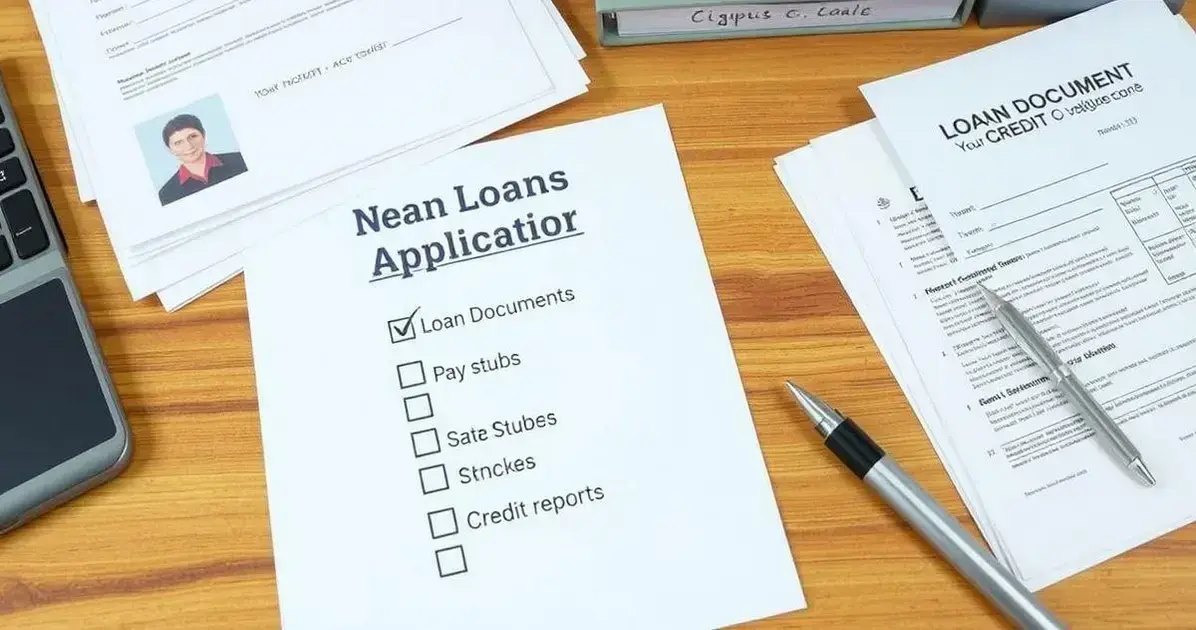How to Get Approved for a Loan is a question that many people face when seeking financial assistance. The process can seem complex, but understanding the criteria that lenders use can give you a huge advantage.
Each lender has its own specific requirements, but there are common factors that can impact your approval chances, like your credit score, income, and debt-to-income ratio. Knowing what to expect is key to presenting yourself as a strong candidate.
If you’re ready to learn how to improve your chances and navigate the loan process more smoothly, keep reading. You’ll discover practical tips and strategies that can make all the difference.
Understanding Loan Approval Criteria
When you’re considering how to get approved for a loan, it is essential to understand the loan approval criteria that lenders use. Each lender has different requirements, but most evaluate the same key factors.
1. Credit Score
Your credit score is one of the most important factors in the loan approval process. It reflects your credit history and helps lenders determine your ability to repay the loan. Generally, a higher credit score increases your chances of approval and may lead to better loan terms. Aim for a score of 700 or above for the best rates.
2. Debt-to-Income Ratio
The debt-to-income ratio (DTI) is calculated by dividing your monthly debt payments by your gross monthly income. Lenders typically prefer a DTI ratio of 43% or lower. A lower ratio indicates to lenders that you are financially healthy and can manage new debt.
3. Employment History
Lenders will assess your employment history to ensure you have a stable income source. A steady job and a reliable income can significantly improve your chances of getting approved. If you have changed jobs frequently, be prepared to explain the reasons.
4. Loan Amount and Purpose
The amount you are requesting and the purpose of the loan matter as well. Lenders want to know what you plan to do with the funds. Be clear about the purpose and provide a detailed plan, especially for larger loans.
5. Collateral
For secured loans, lenders require collateral to protect their investment. Collateral can be a car, house, or other assets. Offering collateral can improve approval chances, especially for those with a lower credit score.
Understanding these core criteria is vital for anyone looking to secure a loan successfully. Tailoring your approach with this knowledge can help you better prepare and enhance your chances of approval.
Improving Your Credit Score
Improving your credit score is crucial when applying for a loan, as it significantly influences your chances of approval. Here are some effective strategies to help you boost your credit score.
1. Pay Your Bills on Time
Timely payments reflect your reliability to lenders. Set up reminders or automatic payments to ensure you never miss a due date.
2. Reduce Credit Card Balances
Aiming to keep your credit utilization ratio below 30% is generally advisable. This ratio shows how much of your available credit you are using. Lowering your balances can improve your score.
3. Avoid Opening New Credit Accounts Too Quickly
Every time you apply for credit, a hard inquiry is made, which can slightly lower your credit score. Limit new applications unless necessary to prevent score dips.
4. Review Your Credit Reports
Regularly check your credit reports for errors. You can dispute inaccuracies to improve your score. Obtain a free report from each major credit bureau annually.
5. Keep Old Accounts Open
The length of your credit history also impacts your score. Keep older accounts open, even if you are not using them, to enhance your credit length.
6. Diversify Your Credit Types
Having a mix of credit types, like a credit card and an installment loan, can benefit your score. However, only take on debt you can manage responsibly.
By taking these steps and staying committed to improving your credit score, you will be better positioned to get approved for a loan and unlock valuable financial opportunities.
Gathering Necessary Documents

Gathering the necessary documents is a critical step in the loan approval process. Having the right paperwork can make your application smoother and increase your chances of getting approved. Here’s what you typically need to prepare:
1. Proof of Identity
You must provide a valid form of identification, such as a driver’s license or a passport. This helps lenders verify who you are and establish trust.
2. Income Verification
Show proof of your income through documents like pay stubs, W-2 forms, or tax returns. Lenders generally want to see at least two years of income history.
3. Employment History
A detailed employment history can also be required. You may need to provide contact information for your employers. Proof of job stability can strengthen your application.
4. Bank Statements
Collect bank statements for the last two to three months to show your financial health and how you manage your money. This helps lenders assess your savings and expenses.
5. Credit Information
Be prepared to share your credit history, which lenders will obtain through credit bureaus. A good score can help you secure better loan terms.
6. Additional Documentation
Depending on the type of loan, additional documents such as asset statements, loan payoff statements, and property documentation (for mortgages) might be necessary.
Having these documents ready and organized can help you facilitate a quick and efficient loan application process, making it easier for lenders to assess your eligibility.
Finding the Right Lender
Finding the right lender is essential when you’re seeking a loan. With many options available, knowing how to choose the best fit for your needs can make a big difference. Here are some key considerations to help you find a lender:
1. Research Different Lenders
Start by researching various lenders, including banks, credit unions, and online lenders. Each type of lender has its own advantages and may offer different rates and terms.
2. Compare Interest Rates
Interest rates can vary significantly among lenders. Make sure to compare rates to find the most affordable option for your loan. A lower interest rate can save you money in the long run.
3. Check Loan Terms
Every lender has different loan terms. Look for terms that fit your needs, such as repayment duration and monthly payment amounts. Ensure that you understand all conditions attached to the loan.
4. Read Customer Reviews
Customer feedback can provide valuable insights into the lender’s service quality. Look for reviews to see how past clients feel about their experiences and the lender’s responsiveness.
5. Understand Fees and Charges
Different lenders may impose various fees, such as origination fees, prepayment penalties, or late fees. Make sure to ask about any additional costs that may affect your loan amount.
6. Evaluate Customer Service
Good customer service is vital during the loan process. Choose a lender that offers support options that suit you, so you have help when needed.
By considering these factors and doing thorough research, you can make an informed decision and choose a lender that is right for you.
Submitting Your Loan Application
Submitting your loan application is a key step in obtaining the funds you need. Ensuring you complete this process correctly can greatly enhance your chances of approval. Here are the essential steps to follow when submitting your loan application:
1. Double-Check Your Information
Before submission, review your application thoroughly. Make sure all the information, including your personal details, income, and credit history, is accurate and complete.
2. Include All Necessary Documents
Attach all required documents, such as proof of income, bank statements, and identification. Missing documents can delay approval or result in denial.
3. Choose the Right Submission Method
Depending on the lender, you may submit your application online, in-person, or via mail. Choose the method that is most convenient for you and verifies that you have adhered to all submission guidelines.
4. Pay Attention to Fees
Some lenders may charge an application fee. Be sure you are aware of any costs involved and have the payment ready if required.
5. Follow Up with the Lender
After submission, consider following up with the lender to ensure your application was received and is being processed. This shows your interest and helps maintain communication.
6. Be Patient
Once your application is submitted, remember that the approval process can take time. Use this period to prepare for the next steps, such as potential interviews or additional documentation requests.
By carefully submitting your loan application and following these steps, you set yourself up for a smoother process and increase your chances of securing approval.
Common Mistakes to Avoid

Avoiding common mistakes is crucial when seeking approval for a loan. Here are some frequent pitfalls that applicants should watch out for:
1. Not Checking Your Credit Report
Before applying for a loan, always review your credit report. Errors can negatively affect your score. Make sure all information is accurate and dispute any inaccuracies you find.
2. Borrowing More Than You Need
Only request the amount you truly need. Borrowing more can lead to higher monthly payments and increased debt, making repayment harder.
3. Ignoring Loan Terms
Read the loan terms carefully. Many applicants overlook details related to interest rates, repayment periods, and fees, which can lead to surprises later.
4. Failing to Shop Around
Don’t settle for the first loan offer you receive. Shop around and compare different lenders to find the best interest rates and terms that fit your financial situation.
5. Making Late Payments
Even one late payment can harm your credit score. Set reminders for due dates or consider automating payments to avoid late fees and penalties.
6. Not Understanding the Loan Process
The loan application process can be complex. Failing to understand this process can lead to mistakes. Take the time to research and know what to expect.
7. Overlooking Additional Costs
Remember that loans may come with fees beyond the interest rate, such as origination fees or closing costs. Factor these into your total borrowing costs.
By being aware of these common mistakes and taking steps to avoid them, you can improve your chances of getting approved for the loan you need.
What to Do After Approval
After your loan application is approved, it’s important to take the right steps to manage your new financial commitment. Here are actions to consider:
1. Review Loan Documents
Carefully review your loan agreement. Ensure that you understand the interest rate, repayment schedule, and any fees involved. Check that all the information is correct before signing.
2. Set Up a Budget
Create a budget that includes your new loan payments. Calculating how this payment fits into your overall financial situation will help you stay on track.
3. Establish a Payment Schedule
Knowing when payments are due can help you avoid late fees. Create reminders on your phone or calendar so you never miss a payment.
4. Open a Separate Savings Account
Consider creating a savings account specifically for your loan payments. This way, you can set aside funds each month to ensure you have the money ready when payments are due.
5. Keep Communication Open
If you have questions or concerns about your loan, don’t hesitate to contact your lender. Maintaining communication can help address any issues quickly.
6. Monitor Your Financial Health
Regularly check your credit score and financial status. This helps you track how your loan affects your credit and can prepare you for future borrowing needs.
7. Plan for Future Payments
After your loan is approved and received, think ahead. Set goals for paying off the loan early if possible, or plan for your next financial steps.
By following these steps after approval, you can effectively manage your new loan and work toward your financial goals successfully.
Final Thoughts on Securing a Loan
Obtaining a loan can be a crucial step in achieving your financial goals, whether it’s buying a home, funding education, or starting a business. Understanding the entire process, from improving your credit score to submitting your application and managing your loan after approval, is essential.
By following the guidelines outlined in this article, you can avoid common pitfalls and enhance your chances of securing the financing you need. Remember to be diligent in gathering the necessary documents, finding the right lender, and reviewing your loan terms.
With careful preparation and a strategic approach, you can not only get approved for a loan but also manage it effectively, paving the way for a brighter financial future.
Stay informed and proactive, and you will successfully navigate the world of loans and unleash the financial opportunities that await you.


